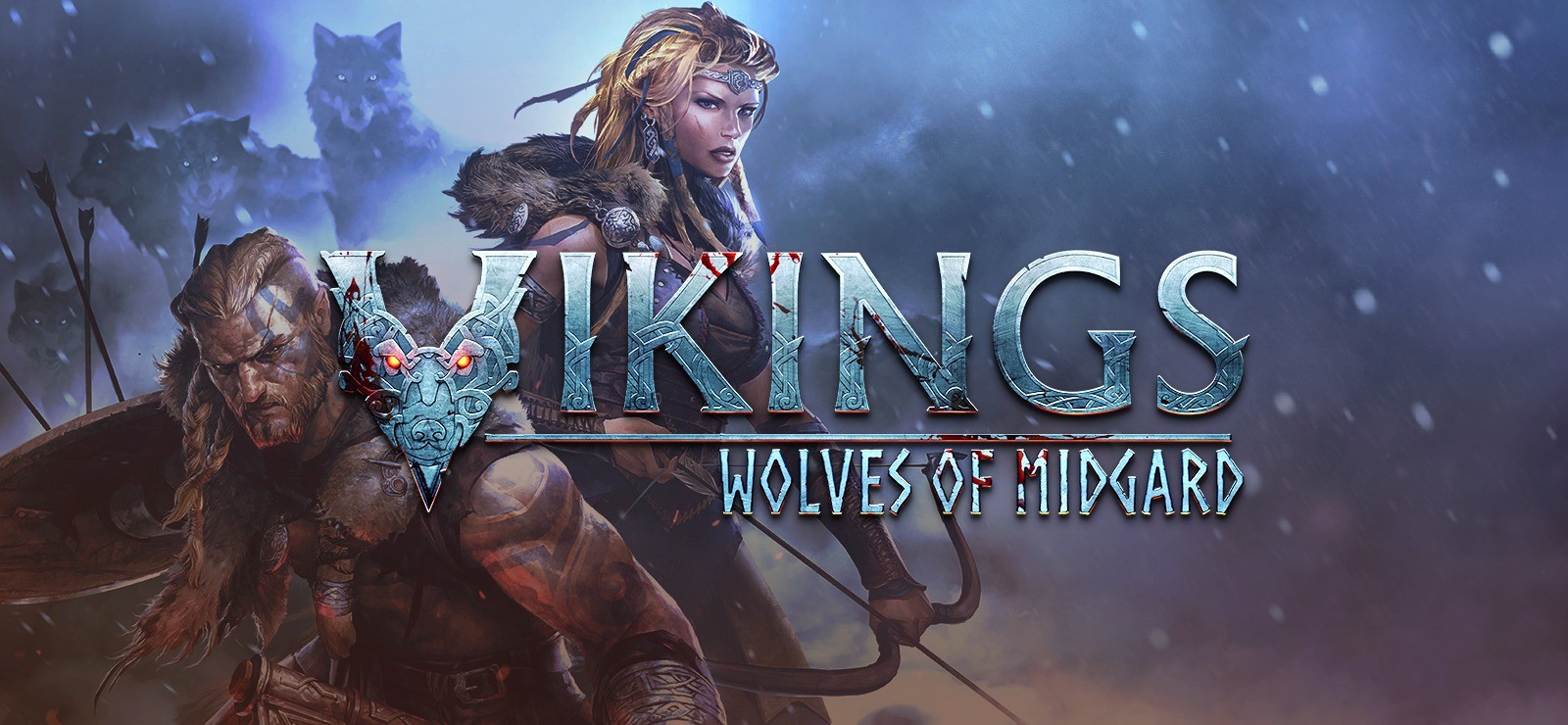
Review by Kyle Worrall
Edited by Jake Basten
Developer: Games Farm
Publisher: Kalypso Media
Music: Dynamedion (Mattias Wolf et al)
Sound Designer: Jaroslav Matesz
Reviewed on: Playstation 4
The last five years have seen a definite re-emergence and spike in popularity for television programs, films, and games that take inspiration from Norse culture. Notable examples of this are the History Channel’s Vikings, Marvel’s Thor and The Last Kingdom (a series based on Bernard Cornwell’s The Saxon Stories novels). As well as this rise in popularity from Norse culture in linear media, video games have drawn a large portion of inspiration from the Eddas (a set of Old Norse poems) and lore with games such as Jotun, The Elder Scrolls: Skyrim, and the upcoming and highly anticipated God Of War 4.
Following suit comes an action RPG in the shape of Vikings: Wolves of Midgard, which draws heavily from the character designs, aesthetics and even the name of History Channel’s Vikings. In doing so, Vikings: Wolves of Midgard offers an ordinary hack ‘n’ slash game play experience similar in style to Blizzard’s Diablo series, crossed with the interesting mythology of the Norse faith.

Music
The music is generally fast-paced and exciting while exuding an aura of mysticism that one would expect from an aggressive fantasy game such as this. Interestingly, even with the music muted, Vikings: Wolves of Midgard still has a palpable atmosphere and creates a cold and desolate soundscape.
When the music is used – such as with the main title – it is very well written, produced and received (at least on my end). Drawing compositional inspiration from the likes of The Elder Scrolls: Skyrim in the use of male group vocals in an invented language, the main theme features a Lisa Gerrard-esque female part that is striking at first glance (sung by the voice actress Conny Kollet). All of these choral elements work together over the top of an instrumental, giving the soundtrack a rustic feeling. Dynamedion’s composers chose this method for creating their Nordic vibe, as they wanted the music to not be interchangeable with other fantasy games. The fictional language and the chanting feeling of this adds to this effect, by drawing on similarities with other media of this style. This means that they aspired to (and definitely delivered in my humble opinion) create a soundtrack to match the aesthetics of the game. From the frozen Fjords to enemy tribe encampments, the music offers the perfect style to complement the environment at any given time.
The music in this game is definitely of a high standard, as it always is when coming from Dynamedion (Injustice 2, Total War: Warhammer & Galaxy Legend). Considering the soundtrack for Viking: Wolves of Midgard and its similarities to other hit titles, it is clear that the score was not written to suit any old fantasy game. It is also clear that the main theme was carefully crafted in order to provide a sonic foundation to the soundtrack and to tie the entire experience together homogeneously. Unfortunately, this sonic experience is sometimes affected during the loading screens or when transitioning to level music, where there can be quite a dramatic cut off of the music mid-phrase. This can be a problem in this genre of games, as it takes away from the player’s immersion and feels a little jarring, making you more aware of the problem.
The music during gameplay fits to the setting of the game, but while enjoyable, it did lack a little variety. This isn’t an issue at first, arguably because the gameplay is so fast-paced and the levels are so short. However, because you can do non-story missions (raids) and these usually take place in areas that you have already been to, the same music loops can become repetitive. I think this could be handled through a little more complex integration and creativity in the layering. That being said, the gameplay draws you in so much that you become less aware of the repetitiveness during longer gameplay segments, and the hub (Ulfung Village) acts as a momentary break to help ease any aural fatigue the player might be experiencing.

Sound Design
The sound design in Vikings: Wolves of Midgard is the centrepiece of the game’s audio. It is responsible in the most part for the generation and maintenance of atmosphere and verisimilitude within the game world. The music and voice acting stand out against the sound design of Midgard within the mix, leaving the environmental sounds beneath the music and incorporating the player and master sounds over the top for their ludic value.

With regards to the foley and weapons sound design specifically, I think the sounds are quite good, but they could also benefit from more variation, as you spend the vast majority of your time rolling, swiping and attacking enemies such as Jotun, Boars, Trolls and Wolves. Although you become less aware of the sound during the gameplay, when watching some gameplay back, you can tell that the sound manipulation is fairly subtle. This makes the sounds become somewhat repetitive after a few playthroughs, or as you progress further into the game. In general, the sound design for weapons and foley is empowering to the player and your sense of strength progresses as your spells grow.
The game makes use of musical stingers for quest markers and reaching checkpoints. These choices are interesting as the uses of ornamentation, as well as percussive stingers for quest log updates, easily fall into place over the game’s music. The stingers can play over the top of melodies without disrupting the rhythm of the background music and stand out enough for you to know that you’ve carried out the correct action or reached the marker.
Similarly for the use of healing totems, and when the player refills their totems, there is a short burst of choir that feels as if the gods are healing you magically through the totems. This is effective and an excellent choice considering that there are shamanistic elements to Nordic culture and the ideologies regarding magic and the Gods and Goddesses.

When confronting monsters in the game in the shapes of Jokul, Jotun, Wolves, Tomte and Mirkhrafn, you will almost certainly be aware of their presence due to the sound design. All enemies are clearly distinguishable within the mix of the game. This allows us to locate them easily and detect the density of enemies before diving in with sword, shield or axe! With the high intensity of the gameplay, you’ll almost become unaware of the repetitiveness of the audio; you’ll be enamoured by the enjoyable gameplay and the quality of the monster sounds, at least until you reach around the ten hour mark.
Voice Acting
The voice acting for the narrator is fantastic. She has the essence of an elderly crone telling a story to children around a fire, which would be something that would happen in the times of Vikings. It also fits the style of this being a Saga (eg. Saga of Ragnar Lothbrok) of your character, which happens to tell the story of your triumphs.
For playable characters, there are a variety of options that you can choose from when designing your character. These characters are voiced by the same members of Dynamedion who do the vocals for the main title and although there are timbral differences to the vocals of the music and the voice acting, it does give a sense of familiarity. The only general criticism of the PC voice acting is that the lines of dialogue that they speak throughout combat and exploration were also victim to repetition and began to get on my nerves. Other than that, the accents and speech seemed well suited.

Personally, I think the NPC’s that you encounter in your hometown don’t match the quality of the playable characters’ voices. They’re not bad by any means, unfortunately the game focuses more around the narrators voice and a handful of NPC’s for giving story and context, so the NPC dialogue is repetitive and transaction focused as opposed to anything else for the most part. When story dialogue does come up however, it is well acted and doesn’t feel forced or inauthentic.
Overall
In conclusion, Vikings: Wolves of Midgard offers players an enjoyable and well-rounded experience that brings together many interesting facets of Norse mythology. The visuals and story for this game are supported by music that provides both the ludic function of keeping the player alert and excited, can you buy generic xanax and another level of emotional depth to the story. Most importantly it does this while drawing upon the historical connotation of the Vikings and Nordic culture which creates a solid foundation for soundscape and dialogue. Beyond the music, the sound design and voice acting connect the gameplay experience in a way that makes the game feel complete and homogenous, although the quality of the voice acting isn’t as high as you’d hope for a game originally retailing at around £40-50.
Although there are some small scale underlying issues with the game’s audio, and it feels somewhat less polished than other hack ‘n’ slash titles, this is definitely a game to pick up and play – especially if you’re a fan of Norse mythology, Path of Exile, or the Diablo series.
LINKS
Official
We hope you enjoyed Kyle’s review, check out others in our Reviews section. Don’t forget to sign up to our Monthly Newsletter to make sure you don’t miss out on our reviews and interviews.
We’re also running a Patreon campaign to make sure we can keep bringing you regular, high quality content if you’re feeling generous! Thanks for even sharing!
The Sound Architect




